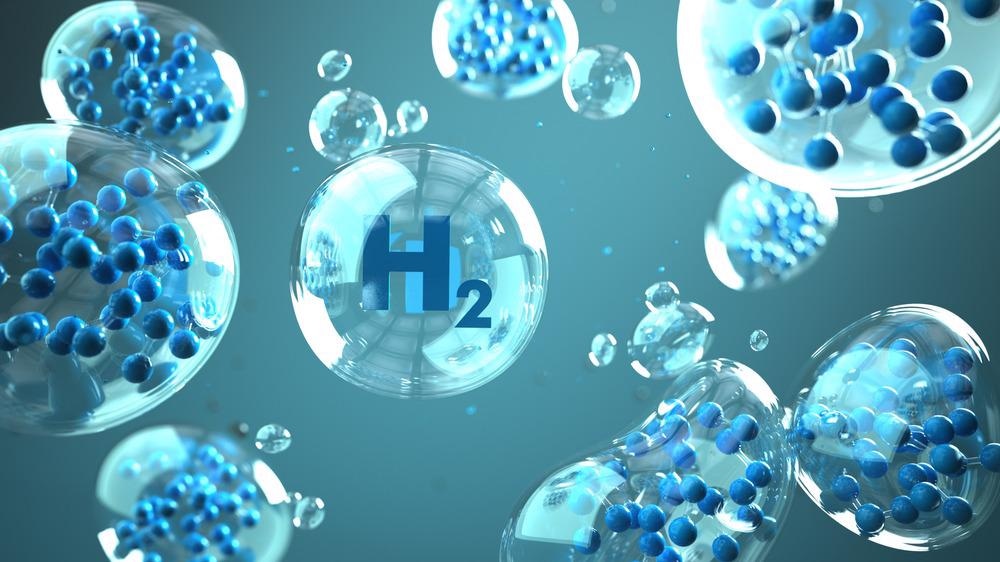In a paper published in the journal ChemPhysMater, a group of researchers reviewed the involvement of two-dimensional transition metal dichalcogenides in electrochemical water splitting produces hydrogen, a renewable and ecologically efficient fuel.

Study: Atomically thin transition metal dichalcogenides for the hydrogen evolution reaction. Image Credit: Alexander Limbach/Shutterstock.com
To reduce energy usage, this necessitates efficient and conveniently accessible electrocatalysts. Two-dimensional metal oxide dichalcogenides (TMDs) have recently proved their promise as affordable substrates for the hydrogen evolution reaction (HER) as a replacement for traditional noble metal-based catalysts. The researchers provide a summary of recent advances in the creation of stacked TMDs for the HER in their article. Defect and barrier manipulation, graphitic carbon doping, and contact with the supporting material are all discussed as ways to boost TMD catalytic activity.
Limitations of Hydrogen Evolution Reaction (HER)
Hydrogen (H2) is an excellent electron acceptor and promising energy source for power production due to its exceptional spectrometric power density (approximately 140 MJ/kg) and efficient transportability. The use of water electrolysis to store sustainable energy in the form of hydrogen is a green energy method.
The current restrictions of HER for electrolysis of water are related to the cost of the electrode material and the yield of power production. Electrocatalysts that are highly reactive, reliable, and efficient have been a primary focus of research and development.
Suitable HER Electrocatalysts
TMDs have been investigated as HER electrocatalysts throughout the last decade, with some showing HER activity equivalent to noble metal catalysts. In comparison to other earth-abundant metal catalysts, thin-film TMDs have a larger specific surface area and more active sites for HER. Furthermore, electrons may be delivered to the catalyst surface with greater ease. The researchers have highlighted the recent progress of thin films TMDs as HER electrocatalysts, to provide a summary of their achievements and prospects.
Mechanism of HER
HER is a multiple-step reaction that takes place on the surface of the electrode. To lower the overpotential needed to transport the HER, active catalysts are necessary. HER is a nonlinear transfer reaction including one active step that may take place through two different routes.
Method of Volmer–Heyrovsky: The Volmer or discharging reaction is the initial step, where an electron joins a proton deposited on an empty active site of the catalyst to produce an immobilized hydrogen atom (Hads*). The hydrogen source in an acid medium is the hydronium cation (H3O+), whereas in alkali and neutral environments it is the water particle.
The Heyrovsky reaction takes place in the electrolyte, Hads* is connected to another proton and transferred to a second electron from the electrical conductor, resulting in the evolution of the H2.
The Benefits of 2D TMDs for HER
The obvious benefit of utilizing 2D-TMDs instead of Pt-based HER electrocatalysts are their superior catalytic activity and low cost. Because of the atomic density and sleek surface area, the photocatalytic activity is roughly equal to the total number of atoms.
Reduced susceptibility and increased catalytic activity occur from the reduced electron transfer route between the active sites and the conductive surface. Furthermore, 2D TMDs have been identified as promising substrates of their materials because of their ultra-large surface. For improved HER activity, the distinctive surface made up of transition metal atoms and covalently bonded atoms may be easily constructed and reformed. As a result, atomic-thin TMDs are key instruments for elucidating the catalytic processes of HER.
Enhancement Towards the Electrocatalytic Activity of 2D-TMDS
Various ways have been used to effectively use the thin films in practical applications by improving their HER performance. The following are some of the most common strategies: raising the number of active edge sites, boosting extrinsic activity, stimulating the underlying inert plane, and enhancing ionic conductivity.
Research Findings and Conclusion
The researchers analyzed recent advancements in the production of 2D-TMD HER electrocatalysts in their research, and the key factors for assessing HER catalysts and HER mechanisms were first described.
They further detailed the compositions and characteristics of TMDs that have emerged as promising materials for electrochemical HER, including MoS2, MoSe2, and WS2. Due to the low cost of most TMD materials, scalability becomes a deciding factor for applications. Furthermore, the unique surface qualities present prospective platforms that may be easily reconstructed or linked with other materials utilizing a variety of ways to boost performance even further.
Continue reading: Solid Mercury Nanoparticle Synthesis Suggests Sustainable Future for Electroanalytical Chemistry
Reference
Zhu, J. et al. (2021). Atomically thin transition metal dichalcogenides for the hydrogen evolution reaction. ChemPhysMater. Available at: https://www.sciencedirect.com/science/article/pii/S2772571521000255
Disclaimer: The views expressed here are those of the author expressed in their private capacity and do not necessarily represent the views of AZoM.com Limited T/A AZoNetwork the owner and operator of this website. This disclaimer forms part of the Terms and conditions of use of this website.